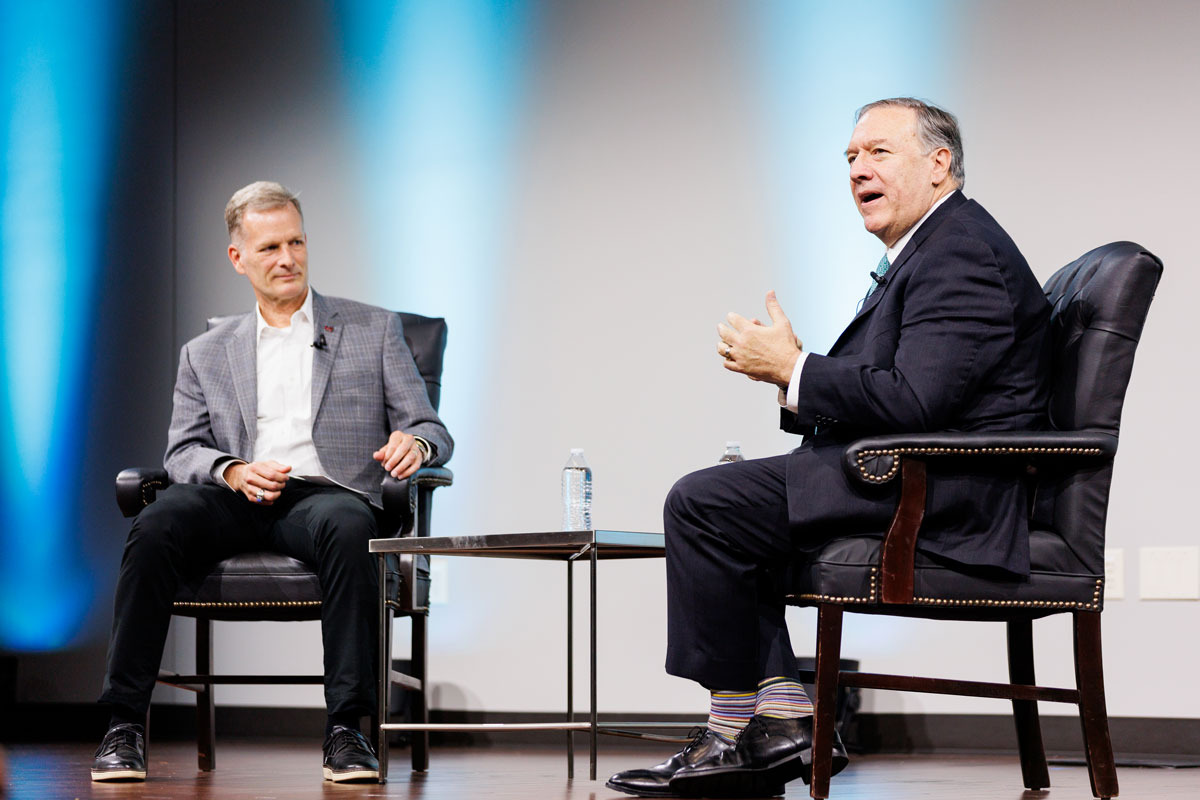Search News Archives
Filter News Articles
Additional Navigation
Simulated bombing turns students into crime scene investigators for the day
April 27, 2018 : By Office of Communications & Public Engagement
Liberty University’s Helms School of Government, in coordination with the Virginia State Police and FBI, hosted seven different simulated crime scenes on Liberty Mountain near Liberty’s Hydaway Outdoor Recreation Center on Friday to give students hands-on experience in processing evidence in a criminal investigation.
Members from the Virginia State Police Bomb Squad rigged a medical-grade, deceased pig with a half-pound of explosives and detonated it to simulate an attack by a suicide bomber. Every detail was considered; the pig was strapped to a vest that mimics one that a suicide bomber would wear. Although the explosion was controlled and there were no risks to participants or the environment, students could feel a small shockwave, and the aftermath was similar to how it would look in a live situation.
“This is a perfect simulation of the real thing,” said Lawrence Presley, assistant professor of criminal justice. “If you go down to where the explosion took place, you will see intestines and everything else exactly like you would see it at a scene, such as the bombing at the Boston Marathon. In this society, students in this track need to know how to respond to these kinds of situations.”

Other staged crime scenes involved stabbings, gun shots, and other causes of death so that students could get a large grasp of what they will be expected to do during any type of criminal investigation.
Liberty’s criminal justice students were joined by students from Liberty’s forensic science program as well as students from community colleges in the region.
“I think one of the most important things is that we’re able to offer students real-life experiences that apply classroom concepts and theories and pair them with criminal justice professionals,” Dr. Joel Cox, program director for Liberty’s criminal justice department.
In the staged suicide bomber scene, students worked alongside the Virginia State Police to examine and collect evidence. They placed flags in the ground to pinpoint where evidence was located and were walked step-by-step through the criminal investigation process by Special Agent Garland Snead from the Virginia State Police.
At the other staged crime scenes, Dr. J. Thomas McClintock, professor of biology and director of Liberty’s forensic science program taught lessons in how to use insects to determine how long a victim may have been laying outdoors.
“This is a huge step in getting my degree,” said Trevor Herbert, a senior forensic science student at Liberty. “Lectures and PowerPoints are a great way to learn, but being able to come out here and apply everything we’ve learned gives us a chance to answer a lot of the questions we may have about the (criminal investigation) process.”
In past years, McClintock hosted a similar “pig on the hill” simulation where forensic science students examined a pig carcass to find clues and answers about how long the pig was sitting in the woods. He has also hosted a bioterrorism simulation. Liberty commonly employs these exercises to allow students to gain real-world experience outside of the classroom before they enter the workforce.


